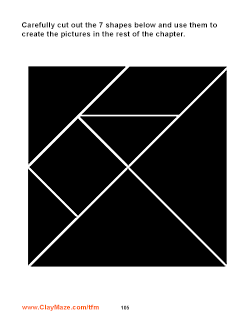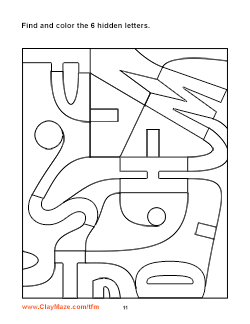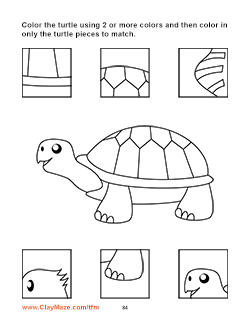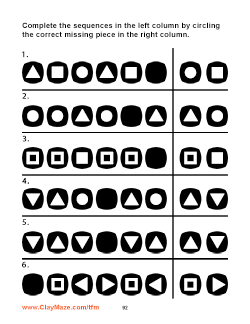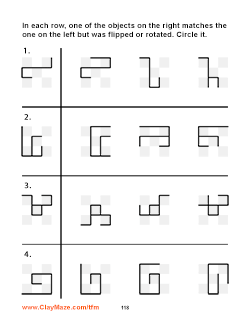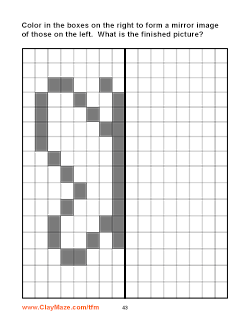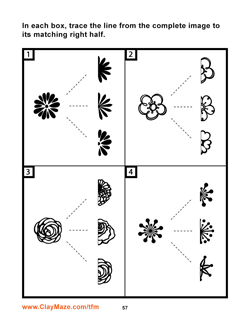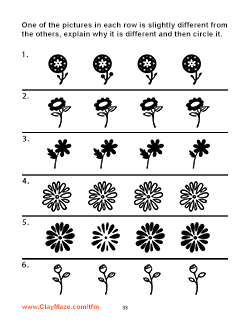ClayMaze.com
The Forgotten Milestone Book, a great STEM Learning Resource
A Coloring & Activity Book on Pattern Recognition
The Forgotten Milestone
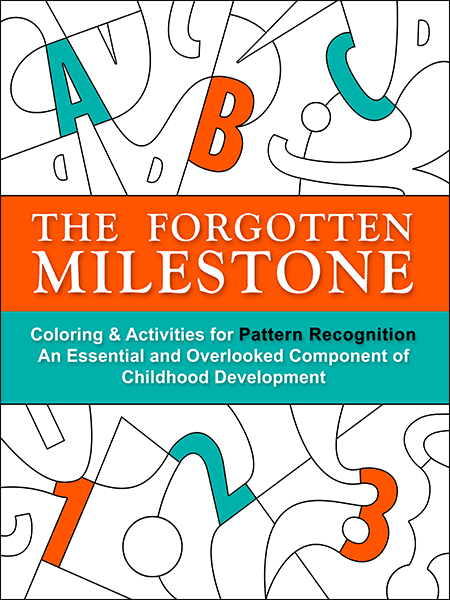
Recommended for children ages 4 to 8.
Coloring and Activities for Pattern Recognition, an Essential yet Overlooked Component of Childhood Development
A Child’s world is full of patterns, from the letters and numbers of our language to the stripes of a snake in our garden and learning to discern the opportunities of life from the potential threats is one of our most important, yet overlooked, developmental milestones.
It has been said that this Pattern Recognition, of all our cognitive processes, has the highest correlation with General Intelligence. That means that the more experience a child has with Pattern Recognition the better they are able to adapt to challenges in Mathematics, Reading, Writing, Sports or whatever else life throws at them.
Whether our children aspire to become Doctors, Financial Analysts, Artists or Athletes, advancing in those fields is really just a race to find the right patterns. This is why an early start with Pattern Recognition is critical to childhood development, yet it is too often ignored in traditional education – and that is why we wrote this book.

Introduction
Why Pattern Recognition is so Important to Your Child’s Development
A child’s world is full of patterns, from the letters and numbers of our language to the stripes of a snake in our garden. Learning to discern the opportunities of life from the potential threats is one of our most important, yet overlooked, developmental milestones.
It has been said that this Pattern Recognition, of all our cognitive processes, has the highest correlation with General Intelligence. That means that the more experience a child has with Pattern Recognition the better they are able to adapt to challenges in Mathematics, Reading, Writing, Sports or whatever else life throws at them. Pattern Recognition is a great foundation for all STEM learning.
A solid background in Pattern Recognition is critical to a successful future in our data driven world.
Whether our children aspire to become doctors, financial analysts, artists or athletes, advancing in those fields is really just a race to find the right patterns. This is why an early start with Pattern Recognition is critical to childhood development and yet it is too often ignored in traditional education.
It is also at these early stages of life when a child is most curious about their world and finds tremendous satisfaction in even the smallest of accomplishments. There is no better time to introduce Pattern Recognition activities.
Traditional coloring books are a great way for a child to improve eye-hand coordination and familiarize themselves with the use of color, but unfortunately the majority of the coloring books available today feature familiar cartoon characters placed in recognizable environments. For a child to develop a true love for problem solving activities and genuinely want to be challenged, there needs to be more – there needs to be a sense of discovery and accomplishment.
Pattern Recognition – Building the Foundations of an Analytical Mind
Challenging a child to find numbers, letters and shapes within disorganized environments, or encouraging them to find the subtle differences between patterns not only advances their cognitive development but inspires them to be more inquisitive and analytical. Moreover, the activity of coloring in those shapes and seeing their accomplishment jump off of the page in bright colors reinforces their victory and further proves to the child that they have brought order to a page full of chaos.

